Assassin's Creed 3 Preview: Everything is Permitted
Ubisoft's radical reworking brings a revolution to the series.
The sulphuric stench of gunpowder hangs in thick, heavy clouds above a war-torn field that's noisy with the opposing forces of the Battle of Bunker Hill. Overlooking the stand-off, General Israel Putnam orders his men not to shoot until they see the whites of the enemy's eyes, while a mysterious figure with a familiar peaked hood silently works his way through the chaos.
For Assassin's Creed 3, the fourth game in as many years for Ubisoft Montreal's open-world stealth series, there's the smell of revolution in the air. Assassin's Creed 2 revived a series that was nearly dead on arrival, while its formula was refined even further in the immediate follow-up, Brotherhood. Revelations was a weary outing - no surprise, perhaps, given its quick-fire nature - a fact acknowledged in the clearly delivered message for the first true sequel since 2009.
"We've made an entirely new experience," says Tommy François, the series' IP and development director and a man who previously lent his new-age corporate evangelism to the ill-fated Innergy. "First and foremost, this has been in development for well over three years, and we still have a lot of time to go. We pooled all our resources wherever possible to make sure that we were innovating wherever possible. This is going back to the original core team that worked on Prince of Persia: Sands of Time, and that worked on Assassin's and Assassin's 2."
So this is what that core team has been doing since worked wrapped up on Assassin's Creed 2, while other parts of Ubisoft busied themselves with extending Ezio Auditore's story. A new character, a new setting and new ways to clamber, eviscerate and assassinate. It's more than just a new set of clothes and a couple of new cities to visit, though; Assassin's Creed 3 feels like the biggest change-up since the series' inception.
You're Connor, a member of the Assassins who's half-English, half-Mojave (his Native American name's Ratohnhaké:ton, though you can be sure that that's the last time we'll be typing that out in full). Following the extravagance of Ezio, Connor's a disappointingly mute presence in the initial reveal, although Ubisoft has a strong sense of how he fits into the lore of Creed.
"Altair's about duty and Ezio's very much about revenge," says François. "In this instance, Connor's about justice. He comes from this village that was destroyed, so he has this strong sense of justice."
His bi-cultural status, as well as making him an easier sell to a wider audience, lends him a certain ambiguity. "There's no rationalisation to try to appeal to a mass market. It's more about giving him more shades of grey rather than having a black and white approach in the game. This made the meeting of two mythos together, and a lot of the taciturn approach that Connor would have compared to Ezio is linked to his Native American side. The understanding of nature, of the environment around him, that's part of his heritage."
Whether Connor has the charm and charisma of his predecessors hardly matters right now, for there's one true star in Assassin's Creed 3. The America that found itself in the grips of a revolution towards the end of the 18th century provides the backdrop, and it's been captured with veracity. In the process, it lends an all-new variety to the series.
Boston and New York are the two cities that will feature, but for now it's only the former that's being shown in any real detail. Still, it's an immersive and dense location, highlighting many of the additions that Assassin's Creed 3 will be bringing to the table.
The first is aesthetic; thanks to a new engine tailor-made for Assassin's Creed 3 and dubbed Anvil Next, it's a handsome recreation of the time. A camera swoops in on a Boston harbour that's all oak, stone and the bustle of commerce, a heaving crowd working its way through the streets while huge Union Flags wave lazily off the bows of docked ships.
Here we join Connor, about to get lost in the throng of Boston's city-life. Non-playable characters now play a more active role; one salesman follows Connor across the harbour as he pleads for his attention, while a market worker drops a small basket of apples, which then proceed to spill out across the floor. Another passer-by stoops down to opportunistically grab one before bolting into the crowds, a small invitation to Connor to accost a criminal that, in this instance, is passed over.
Instead, Connor strolls towards a checkpoint where he's asked for his official papers. He declines, and so starts a chase and escape that's typical of Assassin's - though the scene is now flourished with a subtly expanded move-set. A cart makes its way slowly through a market, Connor light-footing from stall to cart to another stall before moving onwards and leaping through an open window, stumbling through the interior while the inhabitants recoil in horror. It's a new, more agile approach to traversal, reclaiming some of the exquisite feel that was lost in Revelation's clunky, mechanical climbing.
As impressive as Assassin Creed 3's new approach to urban life is, it's the spaces between the cities that are the real bringers of change, and where a large part of Connor's tale is to be played out. The heart of the game lies in the wilds, and in keeping with the game's renewed focus, it's where Ubisoft Montreal's greatest strides have been taken.
Huge swathes of forest can be explored (it takes up an area that's some 2km by 2km, about one-and-a-half times bigger than Assassin's Creed: Brotherhood's Rome). Connor is adept at exploring them, finding footholds in rock-faces and branches and leaning against high-up trunks as he sizes a mark.
Wildlife plays a part - deers pass through the forest (at one point, our demonstrator states that "We're aiming for magical moments with animals not seen before in videogames," and right on cue Connor swoops down, Tomahawk in hand, to kill the animal and take its skin) while bears prey on the player.
It's an organic, breathing backdrop that brings to mind the American wilds of Rockstar's Red Dead Redemption, although in some ways it offers more nuance - seasons pass as the story progresses, each one painting the wilderness in a different light and presenting its own challenges.
In winter, the thick snow slows Connor's progress on the ground, a set of animations seeing him struggle slowly onwards. You'll be able to track marks with more ease in such conditions too - any blood laid down paints a clear red path in the white snow.
In autumn, it's a more visually sumptuous backdrop, though it comes with its own hazards - rain dampens the floor and makes it trickier to find traction, negating a more fleet-footed approach to combat, while muskets are rendered near-useless once wet.
Which leaves Connor to rely on his most iconic weapon, the tomahawk. Dual pistols and a bow and arrow also play a part, as does a rope blade that allows for quick, ranged attacks, but it's the tomahawk that's the most immediately effective: fast, brutal and wielded with no shortness of flair, it's enough to make Assassin's Creed 3's combat feel more physical and more seamless than its predecessors'.
Assassin's Creed 3 promises an open world that's a serious departure from the series' norm, then, but that's not what really excites. Ubisoft's mantra for Assassin's Creed is that history is its playground, and while it's a phrase that loses a little of its sheen in the presentation thanks to its repetition, it still holds true. Here, you're allowed to walk in the spaces where modern America was founded, and to interact with the characters that helped found it.
There's the promise of conversing with George Washington, the Marquis de Lafayatte and Charles Lee, but also of strolling through the battlefields of the revolution. One scene shows this playing out in detail - from walking through a huddle of troops being delivered a stirring speech by General Putnam (a speech that, we're told, is accurate to Putnam's true words) Connor finds himself facing a battlefield where hundreds of soldiers exchange slow volleys of gunfire.
Connor dodges the gunfire by hugging a rock-face for cover - a first for Assassin's Creed - before flanking the battlefield and finding himself in a small clearing that's firmly behind enemy lines. Here he finds his mark, working through a small camp of soldiers and disposing with them in a flurry of tightly choreographed combat, the demo finishing as the tomahawk is quickly introduced to his target's skull.
"I personally believe that video games are one of the greatest mediums in which to learn something," François says a little later, "and I think that Assassin's is great for that." If that's the case, it's a curious and eccentric history lesson that Assassin's Creed teaches: Simon Schama directed by Michael Bay. But it's never been as immersive as it looks to be in the third proper game. For a series that was in serious danger of flagging, it looks as if Assassin's has found the revolution it needed.


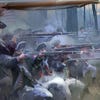
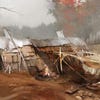


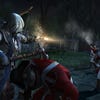
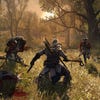



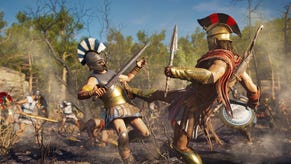
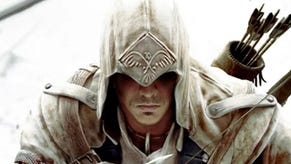
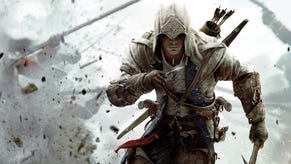
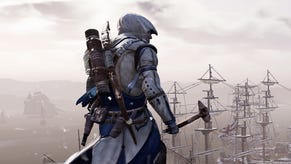


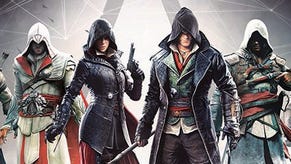




.png?width=291&height=164&fit=crop&quality=80&format=jpg&auto=webp)



